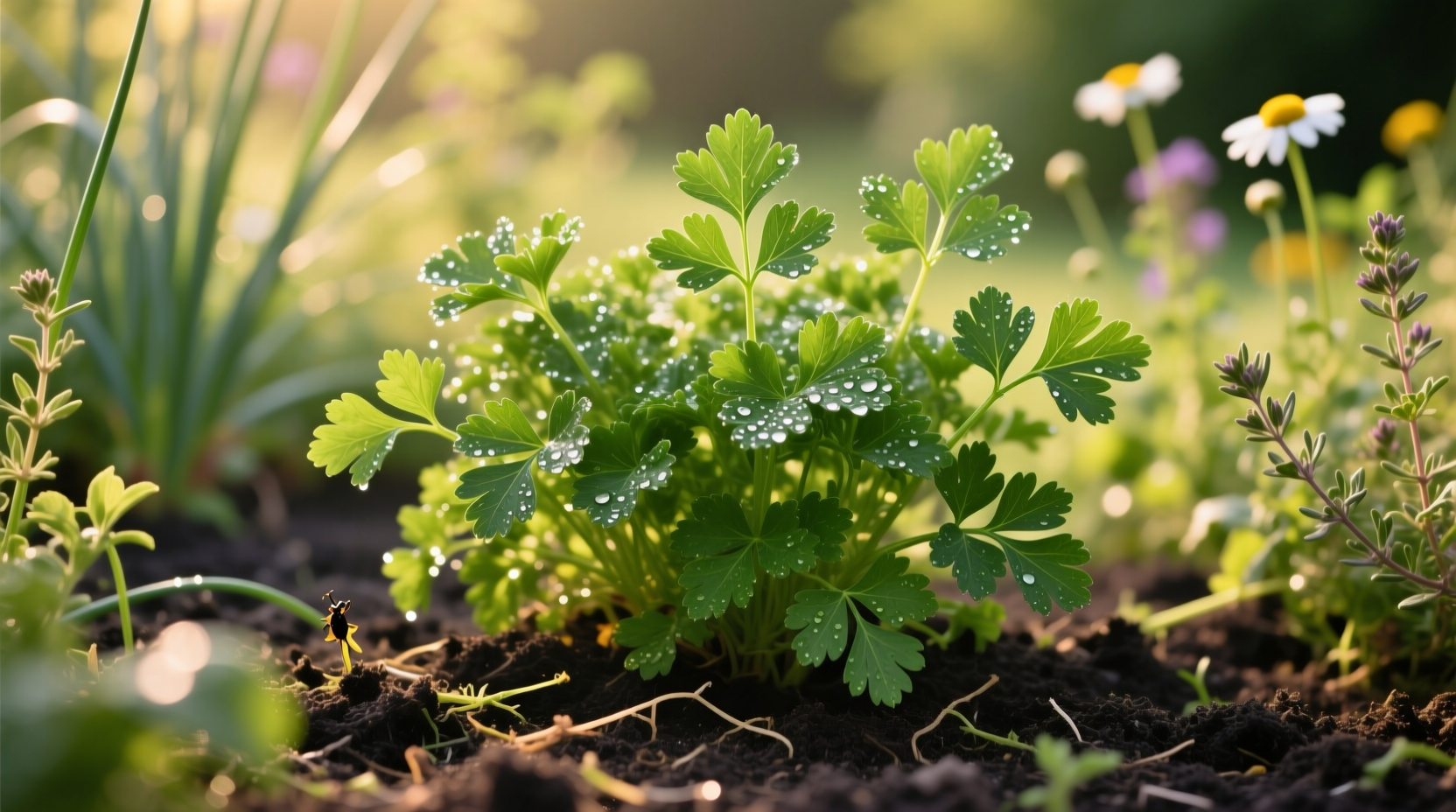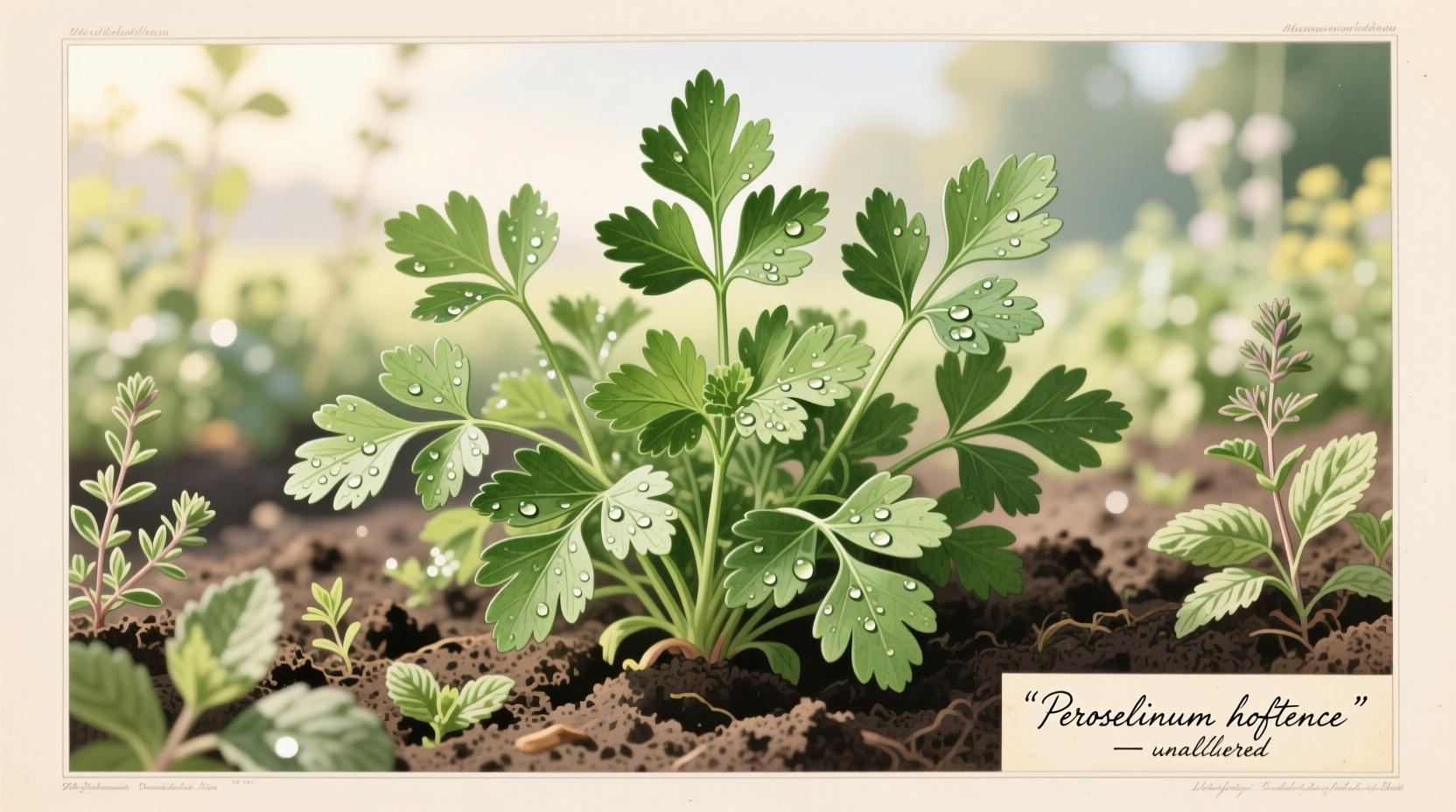Discover exactly how to grow thriving parsley in your herb garden with this complete guide. Learn optimal planting conditions, watering schedules, harvesting techniques, and solutions to common problems - all backed by horticultural best practices.
Why Parsley Deserves a Prime Spot in Your Herb Garden
Parsley isn't just a garnish - it's a nutritional powerhouse packed with vitamins A, C, and K. Unlike store-bought options that lose flavor quickly, homegrown parsley delivers vibrant taste and aroma that elevates any dish. Growing your own ensures a continuous supply of fresh leaves while avoiding the plastic waste of supermarket bundles.
As a biennial plant, parsley establishes roots in its first year and flowers in the second. This growth pattern makes it ideal for herb gardens where consistent production matters. Whether you're cultivating in garden beds, containers, or indoor pots, understanding parsley's specific needs transforms casual attempts into reliable harvests.
Planning Your Parsley Growing Space
Successful parsley cultivation starts with proper planning. This herb prefers consistent moisture and partial shade in hot climates but needs at least 4-6 hours of sunlight daily for optimal growth. The ideal soil pH ranges from 6.0 to 7.0 - slightly acidic to neutral.
Consider these spatial requirements when designing your herb garden layout:
- Allow 8-10 inches between plants for proper air circulation
- Plant in rows spaced 12-18 inches apart
- Choose containers at least 8 inches deep for potted plants
- Avoid planting near lettuce or mint which compete for similar nutrients
Parsley makes an excellent companion plant for tomatoes, asparagus, and carrots. Its strong scent deters asparagus beetles while attracting beneficial insects like ladybugs and hoverflies that control aphids.
Planting Parsley: From Seed to Seedling
Parsley seeds have a notoriously slow germination rate due to essential oils in their coating. For best results, soak seeds in warm water for 24 hours before planting to speed up sprouting. Plant seeds ¼ inch deep in well-prepared soil after the last frost when soil temperatures reach at least 70°F (21°C).
For indoor starts, use biodegradable pots to avoid root disturbance during transplanting. Maintain consistent moisture during germination, which typically takes 2-5 weeks. When seedlings develop their third set of true leaves, they're ready for transplanting to their permanent location.

Essential Care Routine for Thriving Parsley
Consistent care transforms average parsley plants into productive garden staples. Water deeply 1-2 times weekly rather than frequent shallow watering, maintaining soil moisture at about 50-60% saturation. During hot summer months, increase watering frequency but avoid wetting the leaves to prevent fungal diseases.
Fertilize every 4-6 weeks with a balanced organic fertilizer (10-10-10 NPK). Over-fertilizing creates excessive leaf growth with diminished flavor. Regular harvesting actually encourages bushier growth - never remove more than one-third of the plant at any single harvest.
| Variety Type | Flavor Profile | Growth Habit | Best Uses |
|---|---|---|---|
| Flat-leaf (Italian) | Bolder, more robust flavor | Spreads wider, more vigorous | Cooking, sauces, pesto |
| Curl-leaf | Milder, slightly grassy taste | Upright, compact growth | Garnishes, salads, visual appeal |
| Hamburg (Root) | Earthy, celery-like flavor | Large edible roots | Root vegetable dishes, stocks |
Harvesting Techniques for Maximum Flavor and Yield
Timing your harvest correctly ensures the best flavor and encourages continued production. Begin harvesting when plants reach 6-8 inches tall, typically 70-90 days after planting. Always cut stems from the outer portions first, working inward as needed.
For peak flavor, harvest in the morning after dew has dried but before the day's heat intensifies. The essential oil concentration responsible for parsley's distinctive taste peaks during these cooler hours. Regular harvesting every 2-3 weeks prevents flowering (bolting), which makes leaves bitter.
Troubleshooting Common Parsley Growing Challenges
Even experienced gardeners encounter issues with parsley. Yellowing leaves often indicate overwatering or poor drainage - adjust your watering schedule and ensure soil has adequate organic matter. Black spots on leaves typically signal leaf spot disease, which requires removing affected foliage and improving air circulation.
Aphids and whiteflies are common pests that can be controlled with insecticidal soap or by introducing beneficial insects like ladybugs. If your parsley bolts prematurely (produces flowers), it's usually due to temperature stress - provide afternoon shade in hot climates and maintain consistent moisture.
Understanding these context boundaries helps manage expectations:
- Parsley struggles in temperatures consistently above 85°F (29°C)
- It won't thrive in heavy clay soils without significant amendment
- Full shade conditions produce weak, leggy growth with diminished flavor
- Container-grown plants require more frequent watering than garden beds
Seasonal Care and Overwintering Strategies
Parsley's biennial nature means it survives winter in many climates. In USDA zones 5 and warmer, mulch plants with 2-3 inches of straw when temperatures drop below 40°F (4°C). In colder zones, transplant container-grown parsley indoors before the first frost.
Indoor parsley needs 6-8 hours of direct sunlight or supplemental grow lights. Reduce watering frequency during winter months but maintain consistent soil moisture. Rotate containers regularly to ensure even light exposure and prevent leaning toward light sources.
Preserving Your Parsley Harvest
Extend your garden's bounty with proper preservation techniques. Freeze chopped parsley in ice cube trays with olive oil for ready-to-use cooking portions. Alternatively, dry leaves by hanging small bundles upside down in a dark, well-ventilated space.
For immediate use, store fresh-cut stems in a glass of water (like flowers) covered with a plastic bag in the refrigerator. This method keeps parsley crisp for up to two weeks. Never wash herbs before storage, as excess moisture accelerates spoilage.
Maximizing Your Herb Garden's Potential
Parsley's versatility makes it a cornerstone of productive herb gardens. By understanding its specific needs and growth patterns, you'll enjoy continuous harvests that enhance both your cooking and your garden's ecosystem. Remember that successful herb gardening combines knowledge with observation - pay attention to your plants' signals and adjust care accordingly.
Whether you're growing parsley in a sprawling garden or a small balcony container, these evidence-based practices ensure healthy, flavorful plants throughout the growing season. The satisfaction of harvesting your own fresh parsley transforms ordinary meals into culinary experiences worth savoring.











 浙公网安备
33010002000092号
浙公网安备
33010002000092号 浙B2-20120091-4
浙B2-20120091-4